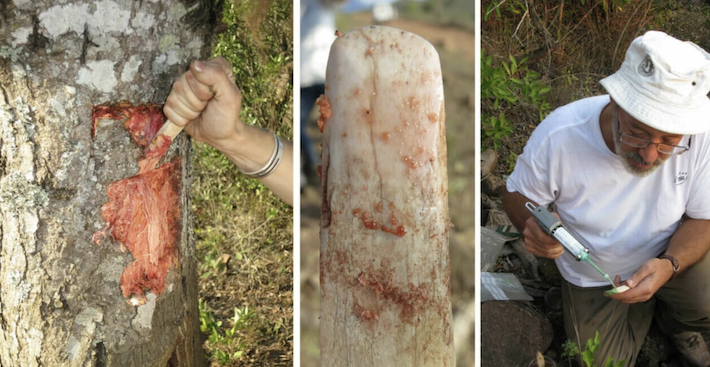 BERGEN, NORWAY—According to a statement released by the University of Bergen, a team of researchers led by Francesco d’Errico has investigated possible used for 23 bone tools discovered in South Africa’s Sibudu rock shelter. The tools, which all have a similar shape, were found in sediment layers dated to between 80,000 and 60,000 years ago. It had been previously thought that such bone tools were used for hunting or to process hides, but d’Errico and his colleagues suggest that these double-beveled tools were used to process plants. First, they examined the wear on the ancient tools under a high-resolution microscope, and then compared what they found to marks on experimental replica tools. Most of the tools, they concluded, had probably been used to collect tree bark for use as medicine and perhaps to dig in humus-rich soil where roots and tubers grew. D’Errico notes that these particular tools have not been found at other sites, and likely reflect a local adaptation to the environment. Read the original scholarly article about this research in Scientific Reports. To read about bone tools uncovered in a Moroccan cave that date to between 120,000 and 90,000 years ago, go to "Earliest Leatherworkers," one of ARCHAEOLOGY's Top 10 Discoveries of 2021.
BERGEN, NORWAY—According to a statement released by the University of Bergen, a team of researchers led by Francesco d’Errico has investigated possible used for 23 bone tools discovered in South Africa’s Sibudu rock shelter. The tools, which all have a similar shape, were found in sediment layers dated to between 80,000 and 60,000 years ago. It had been previously thought that such bone tools were used for hunting or to process hides, but d’Errico and his colleagues suggest that these double-beveled tools were used to process plants. First, they examined the wear on the ancient tools under a high-resolution microscope, and then compared what they found to marks on experimental replica tools. Most of the tools, they concluded, had probably been used to collect tree bark for use as medicine and perhaps to dig in humus-rich soil where roots and tubers grew. D’Errico notes that these particular tools have not been found at other sites, and likely reflect a local adaptation to the environment. Read the original scholarly article about this research in Scientific Reports. To read about bone tools uncovered in a Moroccan cave that date to between 120,000 and 90,000 years ago, go to "Earliest Leatherworkers," one of ARCHAEOLOGY's Top 10 Discoveries of 2021.
Experiments Explore Possible Uses of Mesolithic Bone Tools
